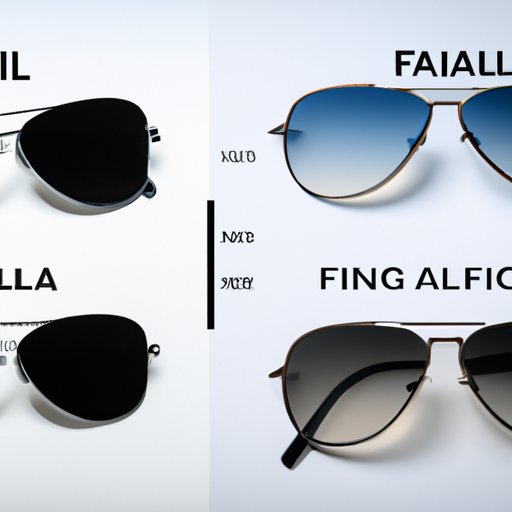
I. Introduction
It is a common belief that perfect vision is an absolute must to become a pilot. After all, pilots fly at high altitudes, maneuvering expensive aircraft, and transporting hundreds of people. However, is it really true that perfect vision is necessary? In this article, we will explore whether aspiring pilots with glasses can turn their dreams into a reality. We will clear up myths, examine the history of vision requirements, and offer suggestions for those who need corrective eyewear to become licensed.
II. Clearing the Air: Is Perfect Vision a Requirement for Pilots?
There is a common misconception that pilots need 20/20 vision to pass the visual acuity test required by the Federal Aviation Administration (FAA). In reality, this is not true. The FAA has specific vision requirements that pilots must meet, but they are not limited to perfect vision. Moreover, the standards have changed throughout history, with new options opening up for pilots with vision impairments.
III. Eyewear Options for Pilots
Pilots with glasses or contact lenses have several options available to meet FAA requirements. Corrective glasses and contact lenses may be used but must be accompanied by a medical certification. Pilots with corrective surgery also need to go through extra tests before flying as well as waiting a designated amount of time depending on the surgery. Additionally, some pilots now qualify for LASIK or PRK surgery, although there may be specific regulations regarding how long the pilot needs to wait post-surgery before resuming their duties.
Pilots also need to ensure that their eyewear meets the safety standards and regulations specific to aviation. Different requirements exist for regular eyeglasses, sunglasses, and contact lenses. The pilot’s eyewear must be sturdily designed, protect from glare, and maintain the pilot’s vision in various weather conditions. A properly fitted eyewear with appropriate sizing, along with proper care and cleaning, are important factors as well.
IV. Redefining the Requirements for Pilot Vision
The vision requirements for pilots are under discussion within the FAA and aviation medicine communities with opportunities opening up for alternative forms of eyewear and corrective surgeries. Individuals with low visual acuity have been permitted to fly commercial aircraft with specially designed corrective lenses, and some have successfully undergone surgeries such as LASIK or PRK. While current FAA vision guidelines will need to be met, evolving operational realities underscore the need to look at alternative methods available to help pilots with vision corner cases.
V. The Impact of Vision-related Troubles in Aviation
Several accidents over the years have demonstrated the importance of optimal vision for pilots. For example, the NTSB concluded that a plane crash could occur due to the pilot’s lack of depth perception -an issue exasperated by the pilot’s undiagnosed overcorrected myopia and reduced stereo acuity. This resulted in temporarily impaired judgment that led to a fatal accident. Pilots should be aware of the risks that vision-related troubles may have on aviation and how such issues could have devastating consequences.
It is vital for pilots with impaired vision to seek corrective measures. Preventative measures, such as yearly vision tests, should be implemented to ensure that pilots maintain their vision and its corrective measures necessary for safe flying. In addition, if pilots experience changes to their formulas or struggle with their eyewear, it is essential to communicate this issue with a flight doctor or vision specialist to troubleshoot the occurrence.
VI. Visual Acuity Tests Demystified for Aspiring Pilots
Aspiring pilots who require corrective eyewear should prepare for the FAA vision test. The FAA requires pilots to achieve certain standards for vision testing. The test typically includes an eye exam, depth perception test, and color vision test. While the test can seem daunting, aspiring pilots should prepare adequately, including ensuring their eyewear is up-to-date and their corrective lenses meet FAA standards.
VII. Conclusion
In conclusion, glasses, contact lenses, or corrective surgeries should not impede an individual’s dream of becoming a pilot. The FAA has specific, evolving vision requirements to safeguard aviation, but alternative methods are available that could include eyewear or corrective surgeries. Above all, it is essential to prioritize the safety of pilots and passengers by ensuring the pilot’s vision is adequate for their flying duties. Aspiring pilots should consult their optometrist to explore vision-enhancing options to pursue their dream of becoming a pilot.




